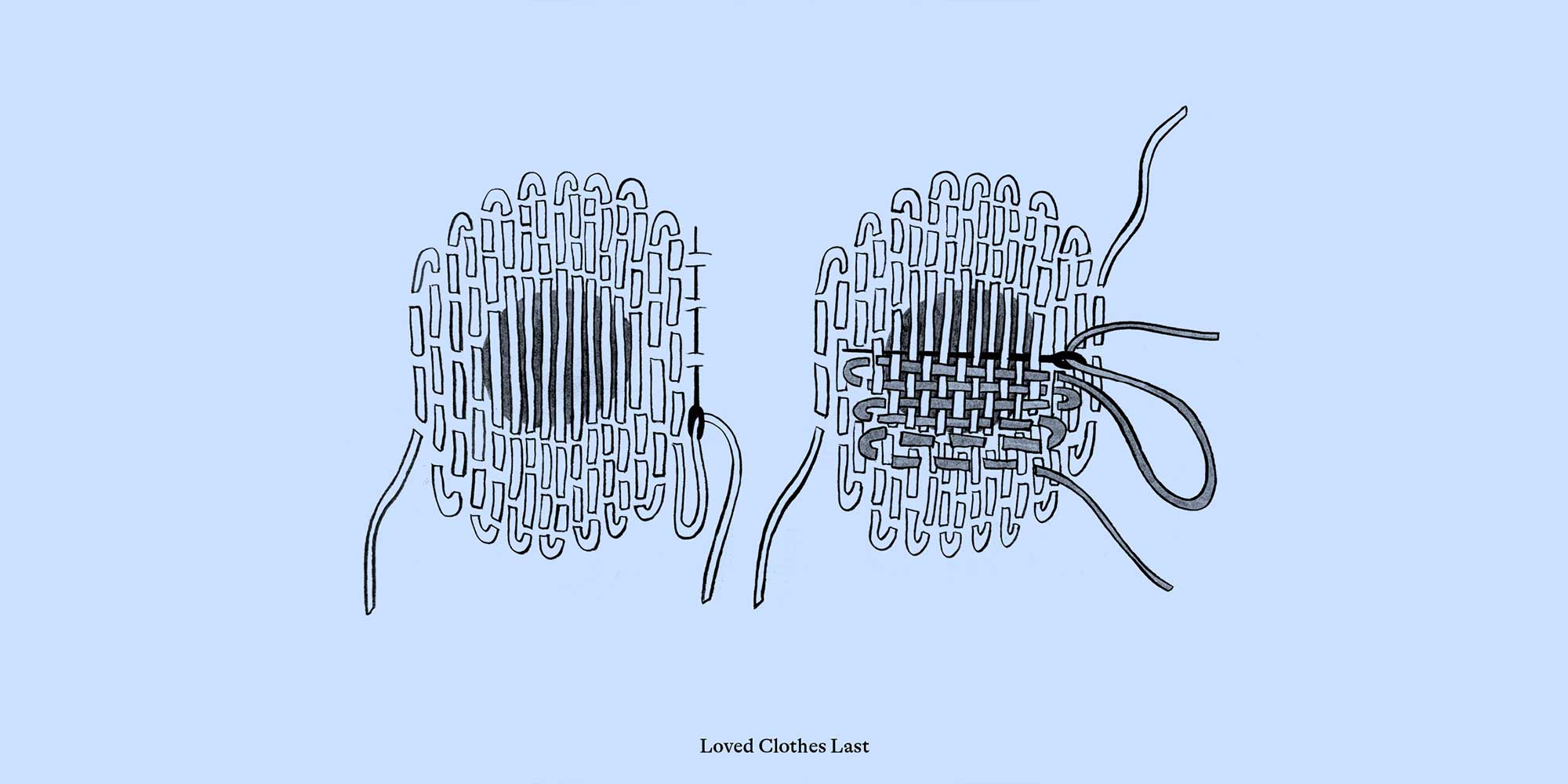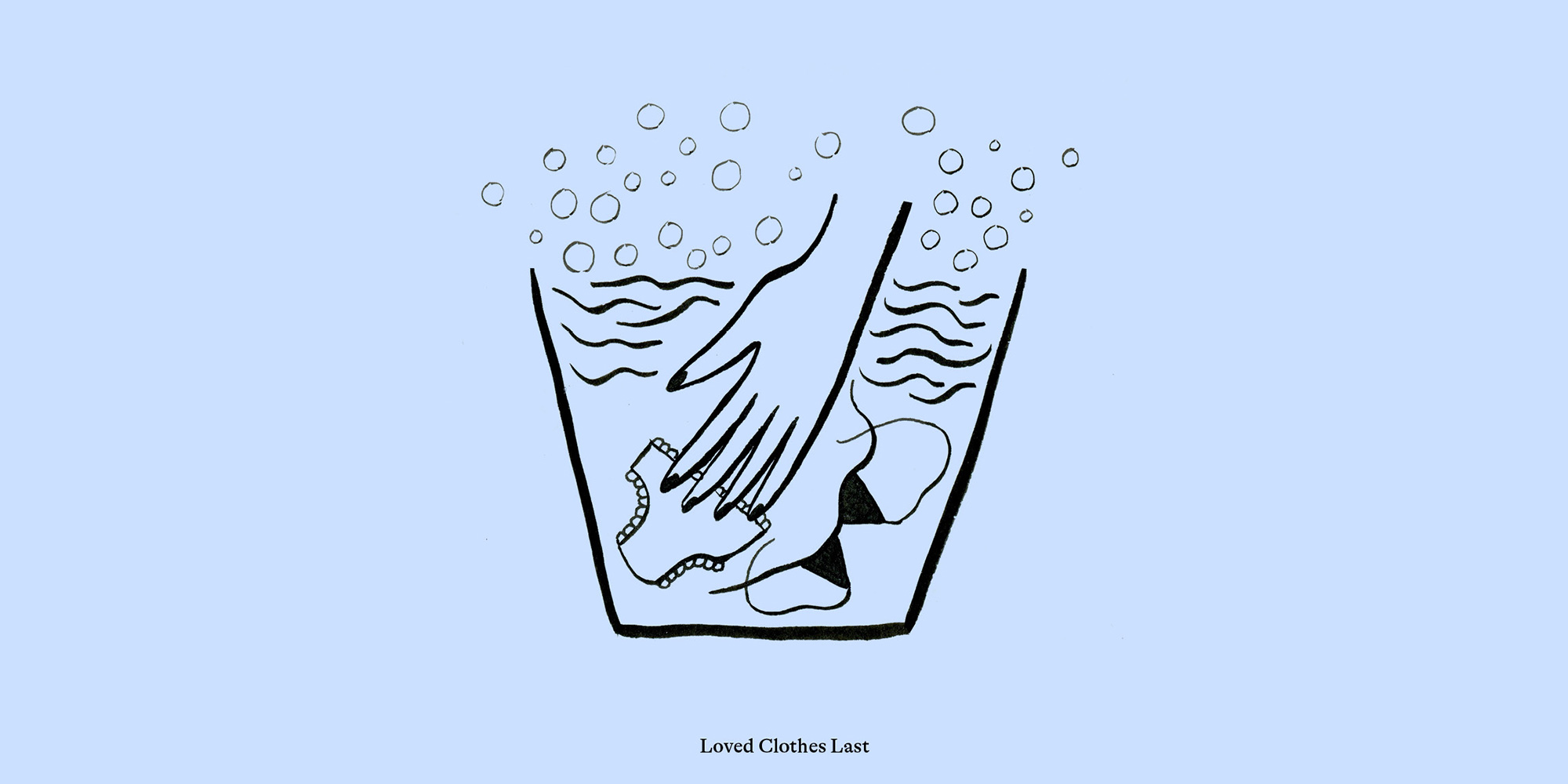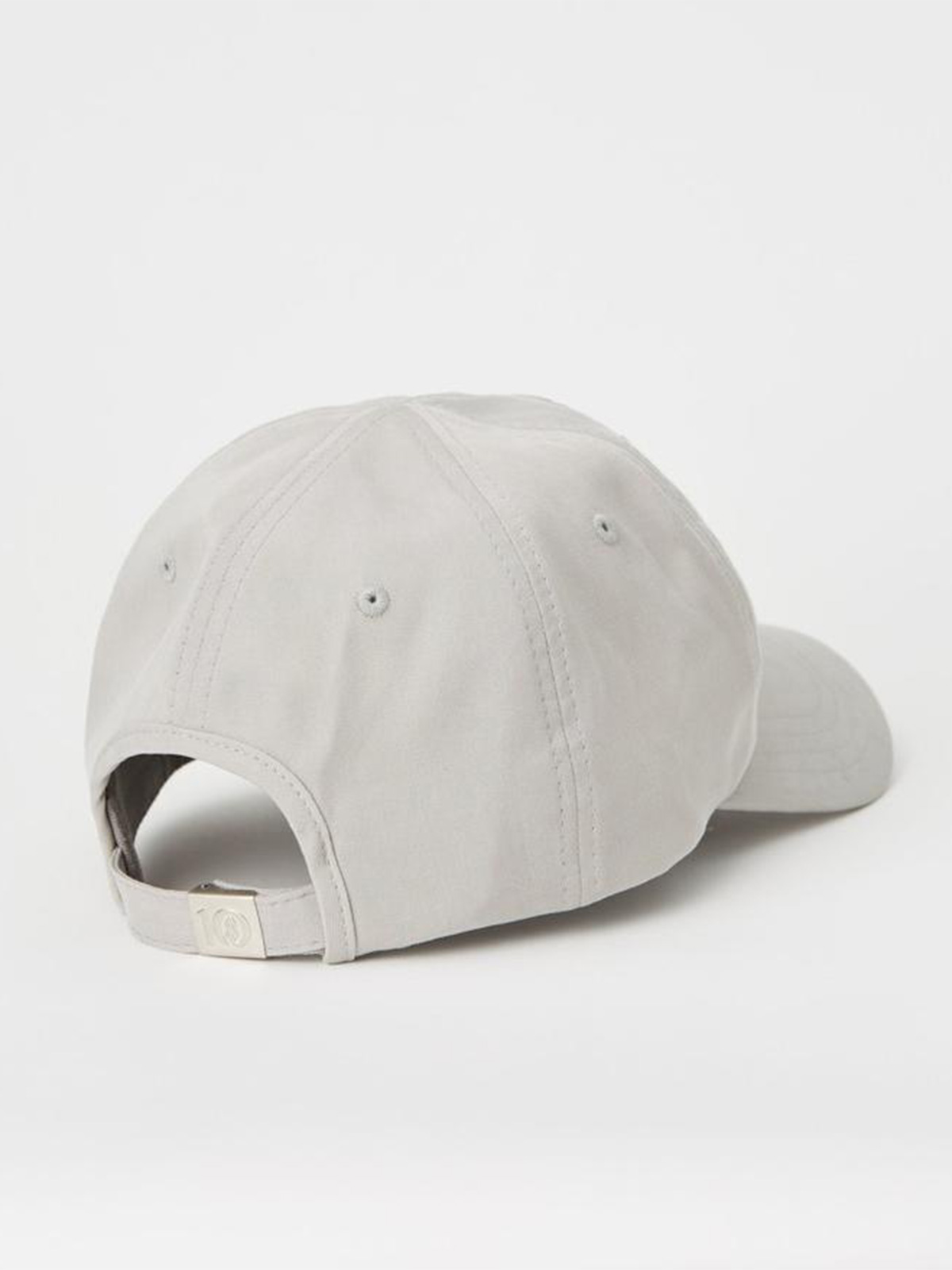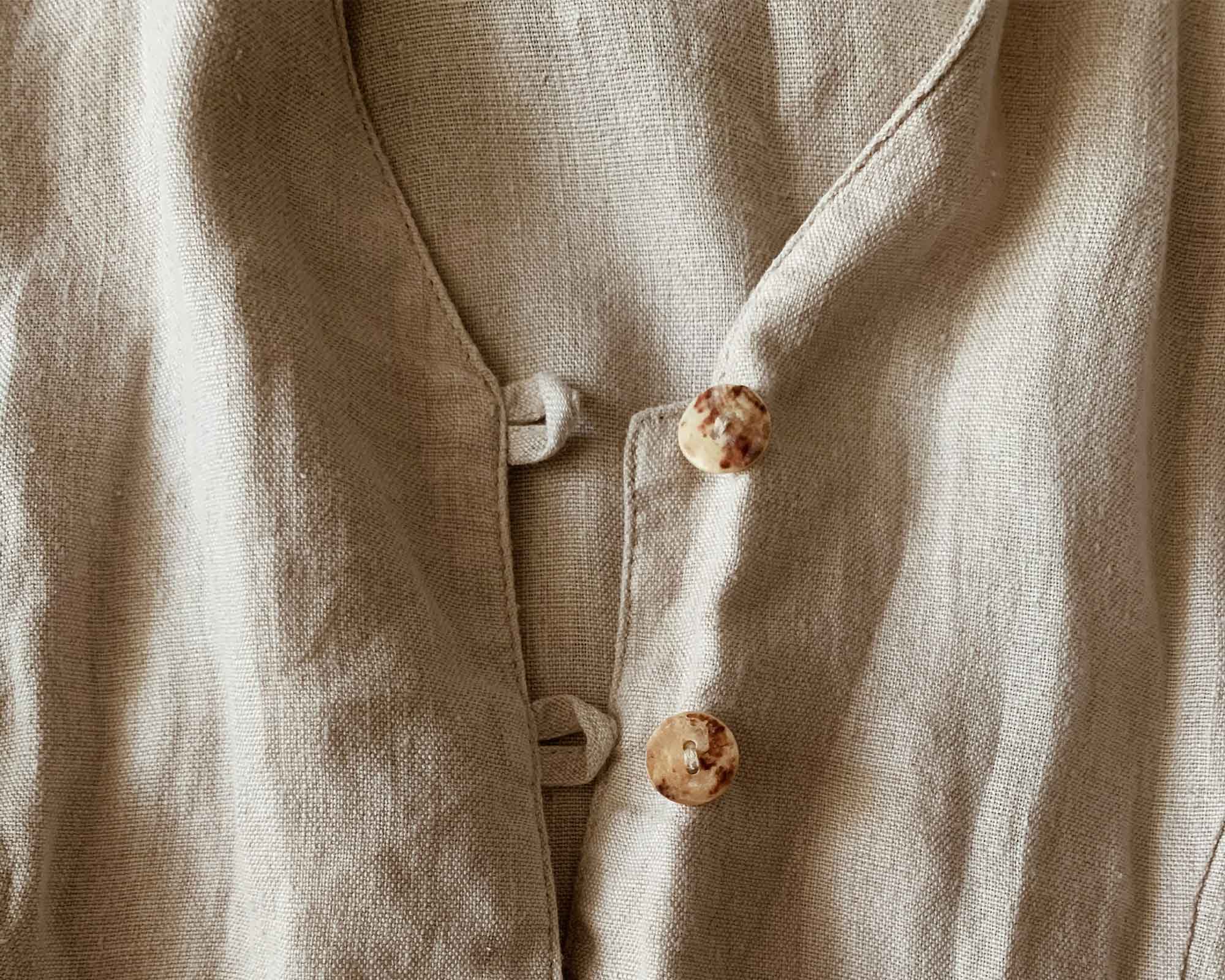Orsola de Castro explains how mending is not only a practical skill but an act of resistance, and shares three tricks to mend your clothes and challenge yourself to think of imperfections as opportunities.
Loved clothes last
In a fashion system that sends a truckload of clothing and textiles to landfill or incineration every single second, mending is not only a practical skill but an act of resistance. It’s estimated that by extending the life of a garment by just nine months, we reduce its water, waste, and carbon footprints by 20–30% each.
Maintenance is a word we no longer associate with clothing, but it lies at the crux of the problem and is a way to define part of the solution—a way to redress the balance between consumption and disposal.
The following three simple tricks to mend clothes are about prolonging the life of our clothes, but they are also about challenging ourselves to think of imperfections as opportunities. Just as we can learn from a mistake, so a broken piece of clothing properly mended can become a favourite statement piece.
1. Darn your holey knits

If you look at mending as a purely practical endeavour, then darning is just lots of little lines of thread connected and woven to strengthen a spot that has become damaged with wear. But if you take it as a vehicle to imagine other meanings, darning tells so many stories; and when it comes to the message we want to convey, it shows off our principles as well as any slogan t-shirt: I care, I repair.
To me, darning speaks a thousand words because it looks so much like a mini universe all of its own. There are several different mending techniques that are better suited to different materials because darning really does work best on knitted or loosely woven fabrics. Check out Fashion Revolution’s “How to do basic darning” tutorial as a good starting place.
2. Fix your jeans Boro style

Boro fabric, a Japanese tradition, involves intricate patchworks made from kimono leftovers. Kimonos were dyed with indigo, which was expensive; therefore, scraps were considered far too precious to dispose of, despite generational wear-and-tear.
Nowadays, original boro fabric is highly covetable—it looks just like the distressed and mended denim that is so fashionable today. Use it as inspiration for customising that pair of jeans in the back of your wardrobe, which you bought but aren’t wearing, or to repair the ones you wore too much.
Boro is all about layered fabric scraps used as patches, reinforced with rows of running stitch, to mend, salvage, and give new strength to old clothes that are damaged. Here’s the basic steps of using boro as a mending technique:
- If you have a tear in your jeans, start by pinning a scrap of fabric at the front and back of the tear. The fabric scraps need to fully cover the tear and extend beyond it so that the patches can be secured to the denim around the tear
- Take an embroidery needle and some white embroidery floss and, from the right side, hand-sew row upon row of running stitch across the entire patch, securing it to the denim and the backing patch
3. Pareidolia your stains

For effective stain removal, certain ingredients are a must, and you should always have them to hand: salt (coarse or fine), vinegar, denatured alcohol, and bicarbonate of soda. Depending on the stain, salt is ideal for absorbing excess liquid while gently de-staining at the same time:
- Apply to stubborn wet stains immediately after spillage—think liquids such as red wine, tea, and tomatoes
- Leave to cover the stain for 20 minutes before scrubbing or soaking
When it comes to particularly stubborn stains, if I can’t get rid of them, I will get creative with them. Have you ever heard of “pareidolia”? That’s when you see shapes and faces on things like stones or clouds. It’s such a fun game to play with stained clothes, especially with kids’ clothes.
You look at the stain and you see a shape in it, then you take fabric felt-tips or paints (or embroidery, if you’re that good), and you bring that form to life. It could be an animal, a flower, a constellation, or a monster. Those are the clothes you’ll keep forever and the clothes your kids will want to wear again and again because they contain their imagination and their own unique intervention.
Make it a lifestyle
Mending doesn’t mean we can’t afford to buy something new; it means we can’t afford something being thrown away. What used to be a badge of shame is now a point of pride. Repairing our clothes is a practical, symbolic, aesthetic, original, creative, trendsetting, badass, revolutionary way to say, “my clothes are me, my chosen skin, my principles, my story. Long live my clothes!”
For more on how (and why) to mend your clothes, grab a copy of Loved Clothes Last: How the Joy of Rewearing and Repairing Your Clothes Can Be a Revolutionary Act wherever books are sold.




















